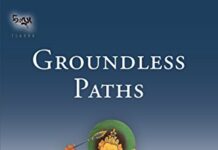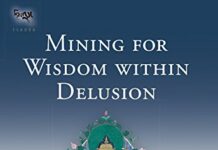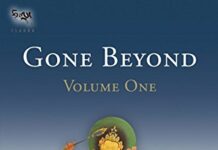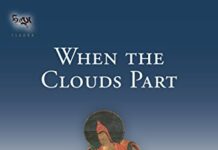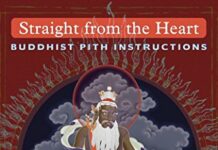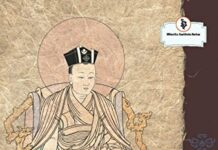
Ebook Info
- Published: 2012
- Number of pages: 176 pages
- Format: PDF
- File Size: 9.40 MB
- Authors: Karl Brunnholzl
Description
A guide to the famous Heart Sūtra that reveals the tenderness and compassion underlying the striking rhetoric of this popular Buddhist textThe radical message of the Heart Sūtra, one of Buddhism’s most famous texts, is a sweeping attack on everything we hold most dear: our troubles, the world as we know it, even the teachings of the Buddha himself. Several of the Buddha’s followers are said to have suffered heart attacks and died when they first heard its assertion of the basic groundlessness of our existence—hence the title of this book.Overcoming fear, the Buddha teaches, is not to be accomplished by shutting down or building walls around oneself, but instead by opening up to understand the illusory nature of everything we fear—including ourselves. In this book of teachings, Karl Brunnhölzl guides practitioners through this ‘crazy’ sutra to the wisdom and compassion that lie at its core.
User’s Reviews
Editorial Reviews: Review “With lively humor and deep scholarly knowledge, Mitra Karl Brunnhölzl brilliantly unpacks the profundity of the Heart S ū tra here for modern readers. In practical and accessible ways, he invites us to join the great practitioners of India and Tibet in contemplating the Heart Sūtra’s wisdom. We are fortunate to have teachers of Karl’s acumen among the growing body of inspiring Western Buddhist teachers.”—Dzogchen Ponlop author of Rebel Buddha and Mind Beyond Death “When the Buddha revealed the Prajñaparamita sutras, teaches Karl Brunnhölzl, the arhats in attendance were so shocked by what they were hearing that they died on the spot. The Heart Attack Sutra seeks to preserve this same spiritual shock for Western minds (but perhaps without the grim consequences that Buddha’s earlier students had to face!) by presenting and commenting in detail on the Heart Sutra, arguably the most well-known sutra in the Mahayana tradition.”—Mandala Magazine From the Back Cover The radical message of the Heart Sutra, one of Buddhism’s most famous texts, is a sweeping attack on everything we hold most dear; our troubles, the world as we know it, even the teachings of the Buddha himself. Several of the Buddha’s followers are said to have suffered heart attacks and died when they first heard its assertion of the basic groundlessness of our existence—hence the title of this book. Overcoming fear, the Buddha teaches, is not to be accomplished by shutting down or building walls around oneself, but instead by opening up to understand the illusory nature of everything we fear—including ourselves. In this book of teachings, Karl Brunnhölzl guides practitioners through this “crazy” sutra to the wisdom and compassion that lie at its core. About the Author Karl Brunnhölzl, MD, was trained as a physician and also studied Tibetology. He received his systematic training in Tibetan language and Buddhist philosophy and practice at the Marpa Institute for Translators, founded by Khenpo Tsultrim Gyamtso Rinpoche. Since 1989 he has been a translator and interpreter from Tibetan and English. He is presently involved with the Nitartha Institute as a teacher and translator. Read more
Reviews from Amazon users which were colected at the time this book was published on the website:
⭐When seeing this book, one might perhaps have two mistaken ideas. One is saying: “Why another commentary on the Heart Sutra? Aren’t there many already?” Another mistaken thought could be: “The books by Khenpo Karl Brunnhölzl are too technical, too difficult; this is not for me.” When you open the Heart Attack Sutra book, you will find for yourself that both of these expectations are false.The author chose a masterful balance in writing this commentary. On one hand, it is lively, experiential, humorous, and full of practical instructions on how to engage the Heart Sutra as a contemplative manual: how to take the words of the sutra to one’s heart on the meditation cushion and how to use the message the ancient sutra conveys in everyday life in today’s world. The essence of this approach is captured in this quote from p. 142:”The Heart Sutra is not primarily about all phenomena (be they skandhas or the four noble truths) as objects, but it is always pointing back to our mind as the subject and how it deals with all these objects. How do we deal with our eyes, our ears, our nose, our tongue, and our body? How do we deal with our sense perceptions? How do we deal with our suffering? How do we deal with the causes of suffering? How do we deal with our path?”On the other hand, this is no dharma-lite booklet for bedtime reading. Khenpo Karl brings into his narrative the vast knowledge of the Prajñaparamita sutras commentarial tradition, skillfully quoting definitions, classifications, etymologies and meanings of the technical terms quoted in or associated with the sutra, accompanied by present-day examples elucidating the meaning.The author based his Heart Sutra commentary on the Indian commentaries, selected Tibetan commentaries as well as Chinese and contemporary Western commentaries and he refers to them throughout. He is also relying on his extensive study of the commentaries on both explicit and hidden meaning of Prajñaparamita as evidenced by his voluminous publications of Center of the Sunlit Sky, Gone Beyond I & II and Groundless Paths.As for the content, the book consists of the meaning commentary in the Introduction followed by the word commentary going through each passage. Khenpo Karl comments on a word or a sentence of the sutra from the technical point of view and then illustrates how this passage can be readily used for contemplation, for practice, for spiritual transformation.Finally, the book also includes an instruction on the practice of the Prajñaparamitahridaya Sadhana by Mahasiddha Darika. Even though this sadhana has been translated and commented upon elsewhere (Elaborations on Emptiness, Donald Lopez), without Khenpo Karl’s clear practice instructions, it is difficult if not impossible to put this lovely visualization – which is enacting the story of the Heart Sutra, very much like a theatre play – into practice.In sum, when enjoying such balance between precision and readability, a miracle of a sort happens: while reading this book, you are drawn into the narrative as if wanting to finish it in one sitting – like a detective story with a humorous undertone – and at the same time you are being served the dharma without compromise, gems of traditional scholarship, which in other contexts would put most people to sleep. But here both approaches not only can coexist side by side, but are even enhancing each other, feeding the fire of prajña arising from such delightful reading. And so one can rightfully ask a question: Isn’t the Heart Attack Sutra book an evidence of the genuine western Buddhism actually taking root, where the western approach to narration is employed without compromising on the precision of the traditional discourse? It is, for me. For that reason this is not yet another, redundant commentary, this is a unique masterpiece and is worth reading for all who aspire to be followers of the genuine tradition of the Heart Sutra.This Heart Attack Sutra is truly the attack for the ego’s heart and therefore it is a delight for the heart aspiring for freedom.
⭐Very useful book full of information that transmits the understanding of the entire Buddhist path from the ultimate perspective of Emptiness. The Prajñaparamita is in itself the Awakened state, therefore it is the main power that the Arya Bodhisattva have for the entire life and death.After the introduction that goes up to page 55, the commentary on the begins on page 56. KB explains that the text he is going to use is the long version that contains an introduction and a conclusion. Although Kb mentiones on page 59 that the introduction and conclusion is a late addittion he gives it validity as Buddha-vaccana. From the beginning Brunnholdz’s intention is to get almost fully into the core of the teachings, without wasting time in analyzing the possible historical origin and structure of the “Sutra.” For that, if the practitioner is interested, he should read Red Pine’s comment.The core of the book is between pages 100 and 117, where KB gives the explanation of the Deep Quadruple of Emptiness:”Form (matter) is Emptiness, Emptiness is Form. Form is nothing but Emptiness, and Emptiness is nothing but Form” (although Rupa in Sanskrit means Matter).”On page 123 is the second most important part of the book, where KB introduces the logical reasoning of the Madhyamaka philosophy – “No Arising, No Ceassing”.Another high point is found on page 133 where KB is dedicated to explaining the twelve Ayatanas and the eighteen Dhatus from the perspective of the Abhidharma.The final chapters are dedicated to concisely explaining the Prajñaparamita maha-mantra.What I like the most about this book is that it brings a lot of technical information but also very practical. Sometimes KB seems to give too many words and explanations, but the author achieves a great balance that can increase the understanding of intermediate level as well as advanced. As such I do not recommend it for beginners.
⭐One of the best introductions to the complexities of the ‘Heart Sutra.’ After reading the detailed 3 volume set of ‘Gone Beyond’ & ‘Groundless Paths’ which is a detailed analysis of the Perfection of wisdom sutra traditions, of the Kagu and Nyingma schools of Tibetan Buddhism. I wanted to read this book too, on the better known ‘Heart Sutra.’ I was delighted to find a manageable introduction to the whole topic of these important teachings within Buddhism. This book is also a very good commentary on the sutra itself. This will be of use to the general reader interested in this aspect of Buddhist philosophy, and the more experienced Buddhist reader alike.
⭐Bought this because of the glowing reviews on American Amazon.It was pretty good; a lighthearted(!) introduction to Buddhism with a few philosophical gleanings on top.It was accessible and did not misconstrue or oversimplify things (although it remained very simple throughout).All in all it was a good book, although by no means a “revolution” compared to previous books that aim to introduce Buddhism to the reader.
⭐I just cannot rate this text high enough… Not just THE best commentary on the Heart Sutra but a highly readable translation. Truly, this is another one of those ‘only book you’ll ever need’ texts. Don’t hesitate – get this!
⭐Ultimately lacking ♥ heart. A little too philosophical, muddies the water further rather than making it clearer, which for this sutra is essential. A good attempt though, but I prefer Red Pines book.
⭐Profound and engaging. Much easier to digest then the prajaparamita commentary (in two volumes) by Karl Brunnholzl. Feeling it will need another read….maybe another after that!
Keywords
Free Download The Heart Attack Sutra: A New Commentary on the Heart Sutra in PDF format
The Heart Attack Sutra: A New Commentary on the Heart Sutra PDF Free Download
Download The Heart Attack Sutra: A New Commentary on the Heart Sutra 2012 PDF Free
The Heart Attack Sutra: A New Commentary on the Heart Sutra 2012 PDF Free Download
Download The Heart Attack Sutra: A New Commentary on the Heart Sutra PDF
Free Download Ebook The Heart Attack Sutra: A New Commentary on the Heart Sutra
